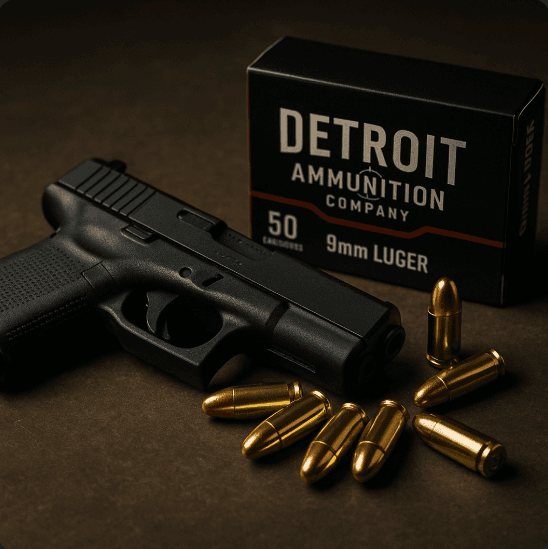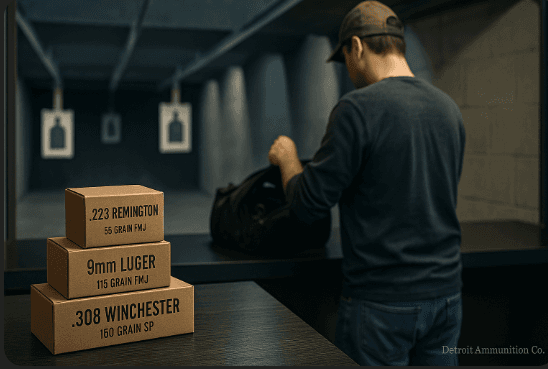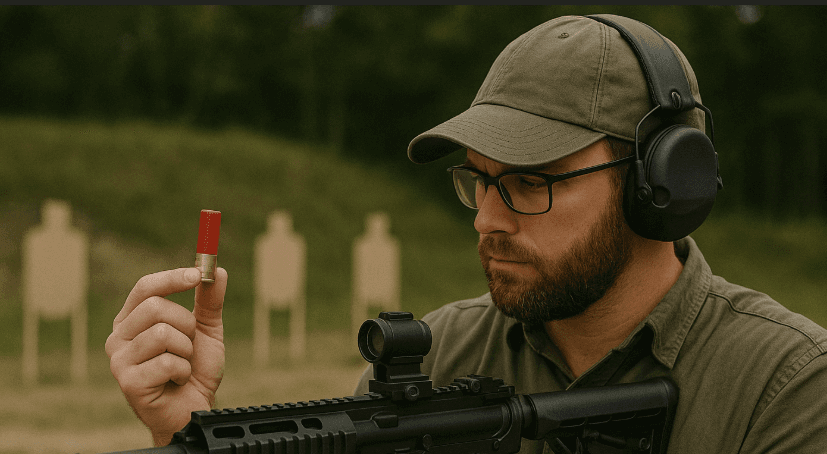All You Need to Know About Firearm Safety
Posted Jan 30, 2022
With the right training and experience, handling a firearm shouldn’t be too complicated. However, if you are a newbie, it’s imperative for your and other people’s safety that you learn how to use it properly. If not handled properly, a gun can wound, injure or kill someone. Moreover, you can even hurt yourself if you are not aware of the safety protocols a gunman must abide by. Considering it’s importance, we have put together for you a couple of tips to ensure firearm safety.
Let’s begin.
Tip#1: Point the Muzzle in a Safe Direction
That’s right, the muzzle should always be pointed in a safe direction. Most novices pay little attention to where they’re pointing the muzzle, which increases the chances of deadly accidents. Some new gun handlers jokingly point a loaded firearm towards others, and this is also a big contributor to some of the most lethal mishaps. Never make the mistake of pointing a gun at something you do not intend to shoot. You should also remember this principle when you’re cocking your firearm, or when you are unloading it. If the gun isn’t pointed at someone, an involuntary discharge won’t hurt anyone.
New hires may wonder what a safe direction would be in this case. Any direction where the likelihood of people getting hurt doesn’t exist can be considered as safe. Make sure not to factor out the ricochets as they can be lethal if someone is present in the vicinity, which can also be the person holding the firearm. Guns are unloaded during dry firing exercises. However, it is in your best interest not to point it at any living thing, even if your gun isn’t ready to fire. Whether you are standing with your gun, or chasing a criminal on foot, the best thing to do would be to point the gun at the ground. Also make sure to watch the muzzle even if you fall down. This is a little tricky, you will get there but with regular practice. It is better to practice with an empty firearm. By the time you are on the range or in the middle of a hostile situation, you will already have developed the right muscle memory needed for the task.
Tip # 2: Don’t Trust a Gun’s Built-In Safety Features
In order to become a responsible shooter or gunman, it is vital to treat your gun as if it will fire at any time. The safety feature is nothing but a mechanical fixture that can betray you when you expect it the least. Sometimes, out of negligence, you may forget to turn on the safety feature, which adds to the danger. The safety feature isn’t something you can completely rely on. It is supplementary to proper gun handling.
There is one more thing that you must do when handling a firearm. Never put your finger on or close to the trigger, unless you have to shoot. Furthermore, never try to pull the trigger when the safety is on the “safe” mode, or somewhere between safe and fire. Chances are that the gun will fire right away or after you have released the safety, without having to touch the trigger. No matter what mode the safety is on, any aggressive movement or jab to the firearm can result in a fire. Also, never rest your firearm against any object. There can be an involuntary discharge in case it slides and falls.
Tip#3: Unload Your Gun When Not in Use
Remember, a firearm should be loaded only when you are at the range, hunting, or during combat. When not in use, guns and ammunition should be locked in a safe place. Children and unauthorized people shouldn’t have an access to firearms at any time. If you’re practicing at a range, make sure you unload the fire arm before you leave the place. Whether it is in a car, your home or any place where there are people or animals, a loaded gun will pose a serious threat. So make sure it is unloaded before you take it anywhere.
If you have to hand over the gun to someone or even if you’re putting it back in the safe, make sure you do the following:
- Open the action
- Check the chamber
- Remove the magazine
The crux of this point is to keep your gun unloaded unless you’re certain you want to shoot it.
Tip#4: Always Be Sure of Your Target
After a bullet has left the barrel, it cannot be reversed. You can only exercise control until the gun is fired.. Never make the mistake of pulling that trigger until and unless you are sure of your target and what lies beyond. If your round can injure a living creature beyond the target, try not to fire. Sometimes a little noise in the distance can compel you to fire, especially when you are in a dangerous situation. Remember, no target is important enough for you to disregard the safety of others.
If you don’t know already, a tiny 22 short bullet can travel at a speed of 2.5 miles. A cartridge on the other hand can go up to three miles. In the case of shotgun pallets, they can travel as much as 500 yards. Before you fire, you should know that distance at which your bullet will travel to prevent any unwated collateral damage.
Tip#5: Always Use the Right Ammunition
This is an important one and you must not compromise on it. It is in your best interest to always use the right ammunition. Incorrect ammunition is bad for two reasons. First of all, it ruins the build of your gun; and secondly, it can lead to bad injuries. It doesn’t take more than a single cartridge to wreck your firearm. When shopping for ammunition, make sure to choose one that matches the specs of your firearm. In order to do so, you must go through the instruction manual of your firearm in detail.
Furthermore, ammunition that has been lying around for a long time or one that is wet should be discarded. Also don’t make the mistake of spraying over your ammunition to increase lubrication, as it doesn’t go perfectly with highly lubricated weapons. As discussed above, the wrong ammunition can damage your firearm, hurt you and also result in poor ignition.
Tip#6: What If the Gun Doesn’t fire With a Pulled Trigger?
There are times when a cartridge doesn’t fire when you pull the trigger. If you encounter such a situation, make sure the muzzle is pointed in a safe direction. Your face should also be away from the breech. Then, very slowly, remove the action, unload the gun and retrieve the cartridge. If there is a cartridge in a loaded gun and you have pulled the trigger, the fire can take place at any time; even if it didn’t fire when the trigger was first pulled. The trick over here is to keep an eye on the muzzle. When discharging or cleaning a firearm or working with some form of ammunition, make sure to do it in a space that is properly ventilated. The lack of ventilation can increase your exposure to lead, which can contribute to several health issues. After handling arms and ammunition, make sure to wash your hands thoroughly.
Tip#7: Always Wear Protective Gear
When shooting, it is better to wear your protective gear. Your protective gear includes safety goggles and ear muffs. Some people undermine the importance of ear muffs. In reality, the noise of fired rounds is loud enough to affect your hearing ability. As far as the goggles are concerned, they serve as protection against twigs, clay target chips, falling shots and any form of firearm malfunction.
You should also wear goggles when disassembling or cleaning your firearm. The springs and high tension objects can bounce off and strike you in the eyes, which can affect your sight. Whether you are a hunter, a law enforcement professional or someone with a penchant for gun sport, you should never skip wearing ear and eye safety when shooting. Up until now, all the things that we have discussed have been aimed at other people’s safety. However, this one is aimed strictly towards your own safety. Not only will the protective gear keep you safe, it will make shooting much more enjoyable and comfortable.
Tip#8: The Barrel Should Always Be Clear
Before shooting your gun, make sure to check whether or not there is something in the magazine or in the chamber. No piece of ammunition should be found in those areas. The slightest obstruction can lead to a very unsafe situation for you and others around you. Similarly, there shouldn’t be any dirt, debris or snow in the barrel as it can make a gun bulge during firing. In the worst case scenario, the firearm may even burst when a round is fired. Make a habit of cleaning your firearm right before shooting.
A cleaning rod can come in handy before a shooting session. Sometimes, the noise or the recoil on the firearm may seem a little different than what it usually is. It is a sign that the firearm should be seized and cleaned immediately. At time, a smaller cartridge is placed into a gun. When you do so, the smaller cartridge falls into the barrel, which causes an obstruction when the right sized cartridge is fired. This can make your firearm burst, thus hurting you and others around you. Therefore, it is best to check for barrel cleanliness, as well as every cartridge that ends in your gun.
Tip#9: Don’t Modify Your Gun
A gun is unlike other objects that you can alter and modify at will. Guns are complex machines, and modifying them isn’t the right thing to do if you don’t understand the mechanisms. The modifications you make without expert advice can make your weapon more dangerous. Furthermore, the slightest of mods will void all factory warranties. It is very tempting to have to trigger changed and may even make shooting much easier. However, such a modification can put you and others in grave danger. If a modification is inevitable, it must be carried out by professionals rather than novices. A modification, in most cases, equates to ruining your steady firearm with your own hands.
However, it is best to have your gun checked and serviced from time to time. Regular checking of your gun is necessary for necessary adjustments. A gun is a machine, no matter how sturdy it is, is prone to wearing. By having the gun inspected and serviced regularly, you can add to its longevity.
Tip#10: Learn the Mechanical Handling of Your Firearm
You may be a professional shooter and know a lot about guns, but there are countless types of firearms out there and it is impossible for you to be familiar with all of them and their handling techniques. Learning to handle a new firearm is a lot like taming a wild stallion. You never quite know what you’ll end up with. Before you plan on using a particular firearm, spare some time to get familiar with it. Never make the mistake of learning it on your own. Always access a new firearm under the supervision of somebody who already has the knowledge and the skill to handle it. Before you shoot it, make sure you learn to load and unload it, while making sure you understand and follow all necessary safety measures.
For better understanding, let’s talk about handguns. Most handgun manufacturing companies advise their users to carry their firearms when the hammer is down or when the chamber is empty. Before you choose to carry a new firearm, make sure to read the instruction manual and spend some time testing it on the firing range under the supervision of an experienced gunman.
The Final Word
If you need more tips to ensure gun safety, you have come to the right place. We are an ecommerce platform for firearms and ammunition. We also keep our customers updated on the latest developments surrounding gun rights in the US along with tips, news, and advice on important gun safety subjects. For more information, visit our website today.


